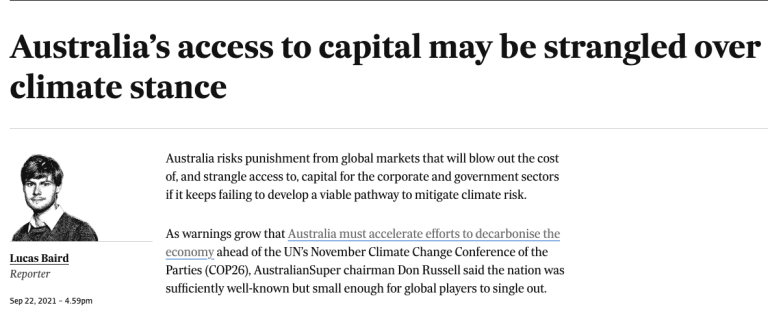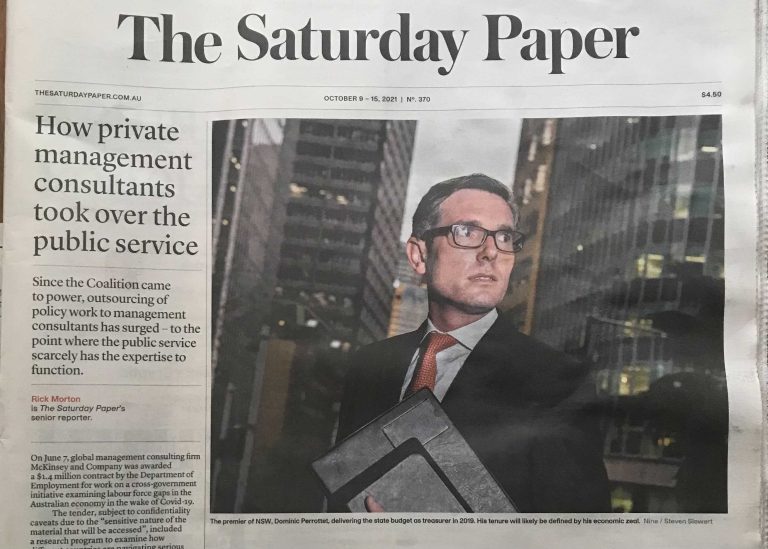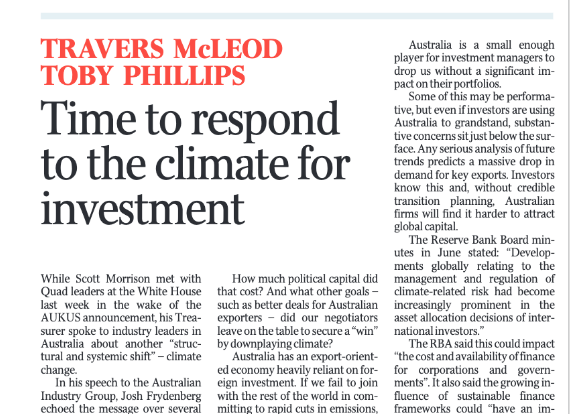Politicians love to talk up farmers but the issue of coal seam gas has revealed that the mining industry remains the favoured constituency for both major parties, writes Ben Eltham.
With Parliament returning for the spring session and Tony Abbott back in the country from his European holiday, hostilities have resumed in our nation’s capital.
The Government has some big items on its agenda. None is bigger than the carbon tax, which the government plans to introduce to the House of Representatives within days. As the carbon tax inches towards law, the no-carbon tax movement has become correspondingly angrier and nuttier — as New Matilda’s Adam Brereton reports today. Dealing with the carbon tax anger is already posing difficulties, not just for Julia Gillard, but also for Tony Abbott.
But it’s not just the carbon tax: Labor has a big legislative slate for the second half of the year. There’s also the Minerals Resource Rent Tax, better known as the mining tax, as well as yet another effort to means test the private health insurance rebate. Both of these bills have a big potential impact on the budget’s bottom line, representing billions in extra revenue or foregone expenditure for a government desperate to return a surplus in 2012-13.
Abbott being Abbott, no sooner had he landed in the country than he resumed his calls of doom about the carbon price. But Abbott also made some off-the-cuff remarks about coal seam gas, an issue that is becoming increasingly divisive in the community. Coal seam gas is another issue where Abbott is finding it tough to strike a balance. That’s because the issue pits two conservative constituencies — farming and mining — directly against each other
Very briefly: coal seam gas is a form of gas mining in which coal deposits under the earth are hydraulically fractured, using a dirty mixture of water and chemicals, allowing the methane gas to bubble up and be captured. Like any hydrocarbon, methane is a potent greenhouse gas. It’s also in huge global demand. The vast potential for profit has driven an unprecedented boom in coal seam methane exploration across inland Australia. A number of energy companies such as Santos and the Queensland Gas Company have announced vast gas export projects worth tens of billions, while smaller players like Dart Energy are busy drilling exploration wells near environmentally sensitive areas such as the Wollemi National Park. According to Bond University’s Tina Hunter, there are plans to drill over 40,000 wells in Queensland over the next five years.
One of the reasons coal seam gas is such a divisive issue is because of the way Australian mining law comprehensively favours minerals exploration and extraction. In keeping with the long history of special treatment for mining extended by Australian governments of all persuasions, the states and Commonwealth have long reserved ownership of most or all the minerals in the land, which they then sell off to mining companies via a system of leases. In Queensland, for instance, where much of the coal seam exportation has been going on, the Mineral Resources Act 1989 (pdf) states quite plainly that “All minerals … on or below the surface of land in Queensland … are the property of the Crown.”
Once given a lease, mining companies have broad rights to explore on freehold land, whether the land owner likes it or not. In New South Wales, for instance, under thePetroleum Onshore Act 1991, land owners simply do not have the right to stop the holder of a mining lease from drilling on their soil. Despite the vigorous campaign by farmers and land owners to “lock the gate” on mining companies wishing to explore and drill on their land, if they really want, mining companies can take land owners refusing access to their property to court. They will almost certainly win.
The environmental issues around coal seam gas are becoming better known, and they are not pretty. The recent documentary Gasland has of course had a huge impact. But perhaps of greater importance was recent testimony to a Senate inquiry into the coal seam gas boom by the National Water Commission on the potential impact of the industry on Australia’s ground water. At the inquiry, the National Water Commission gave evidence about just how much water would be used. According to the Commission’s acting CEO James Cameron, coal seam gas will extract up to 300 billion litres a year from the Great Artesian Basin.
“It’s a very significant figure,” Cameron told the Senators.
The scale of the fracking required, and of the water to be used, underlines a bigger concern for many Australians: the possible threat of coal seam gas and indeed mining in general to some Australia’s most fertile arable land. This was exactly the talking point Tony Abbott was speaking to when he told Alan Jones that “if you don’t want something to happen on your land, you ought to have a right to say no” last week.
One can imagine that the phones in Abbott’s office started running hot straight away. The mining industry is one of the Liberal Party’s biggest donors and the influence of men like the Minerals Council of Australia’s Mitch Hooke runs deep. A day later, Abbott was clarifying his position — sort of — by saying that “we support the mining industry, but we don’t want to see prime agricultural land destroyed and we think that the rights of farmers should always be respected.”
But the issue of coal seam gas can’t so easily be explained away. And because the conflict is so stark, it has become an interesting litmus test for Australia’s politicians over where they stand in relation to mineral exploration and the future of Australian agriculture.
On the side of agriculture and against the miners are the Greens. They are seeking to introduce a bill to force mining companies to seek written permission from land owners before exploring on their land.
On the side of the miners, with no ambiguity, stands the Government. Mining minister Martin Ferguson was out and about this week ridiculing Tony Abbott’s equivocal position. In typically blunt terms, he told the ABC’s Alexandra Kirk that “there is no right of veto for the agricultural community because in the end we all own these assets.” In other words: the Government wants those mining tax revenues, and farmers need to get out of the way. Ferguson warned that “you can end up with a situation where you can have one or two dissidents wanting to hold up a multi-billion dollar project to a long-term economic worsening of our situation.”
In the middle stands the Coalition, which under Tony Abbott continues to try to be all things to all people. Rejecting the approach from the Greens to work together on the issue, Abbott instead appears simply to be trying to have it both ways. Not for the first time, the Opposition Leader is finding that easy populism can be a double-edged sword.
The polarisation over coal seam gas also tells us much about the current philosophical positions of the Australian political parties. The party which appears committed to the principles of economic efficiency and neo-liberalism is in fact the Australian Labor Party. The party that believes in limiting the market for social and environmental objectives is The Greens. The Coalition, in contrast to both, has all but abandoned its belief in the power of markets for a ruthless but unprincipled opportunism.



